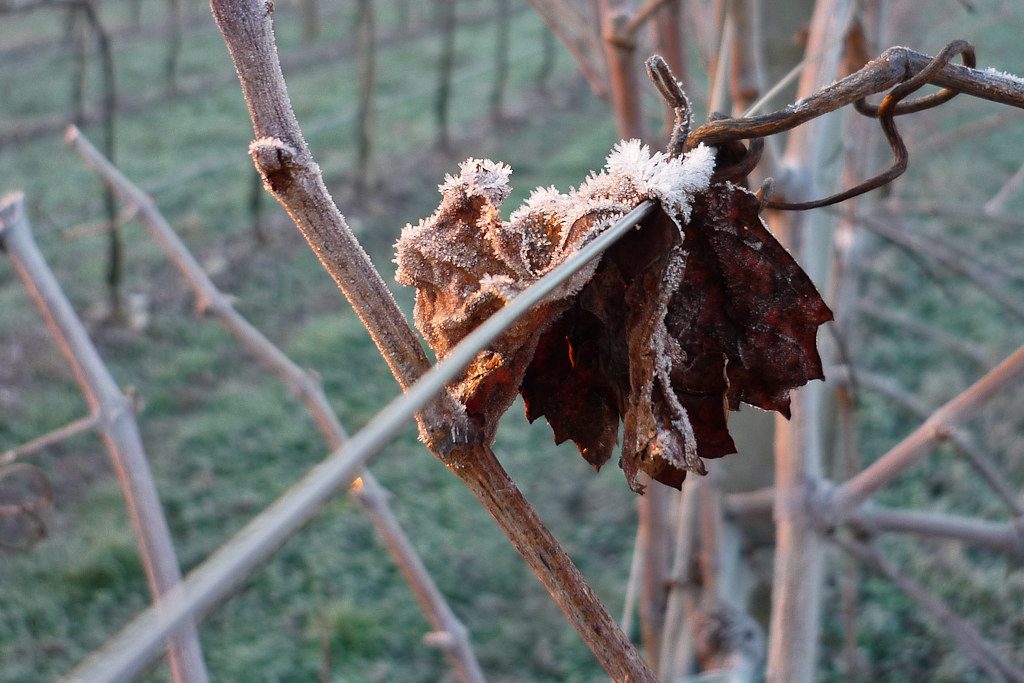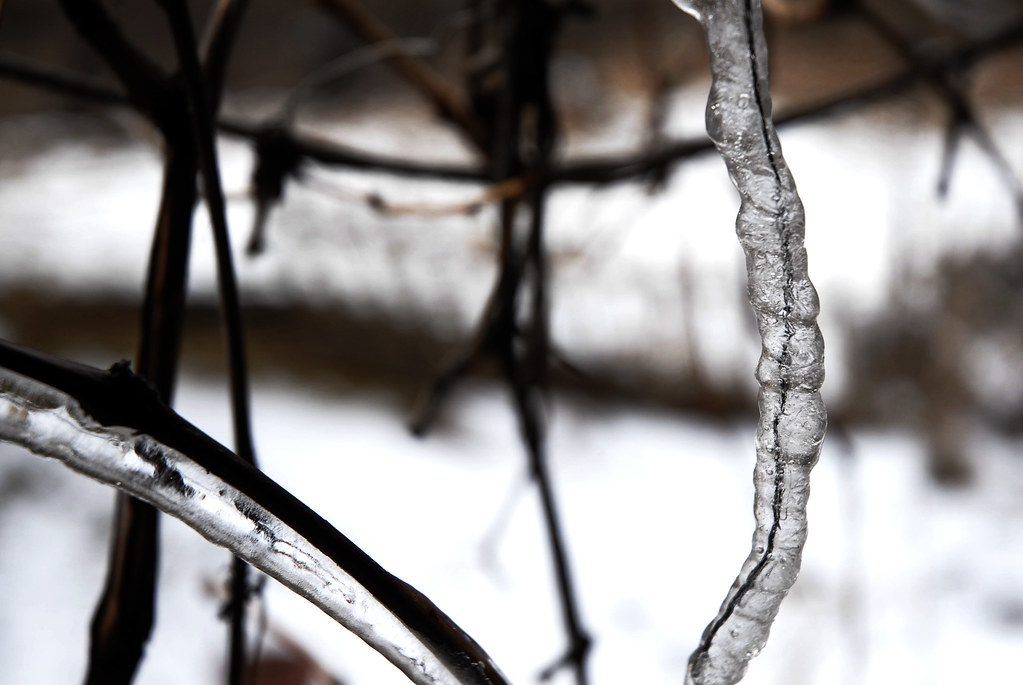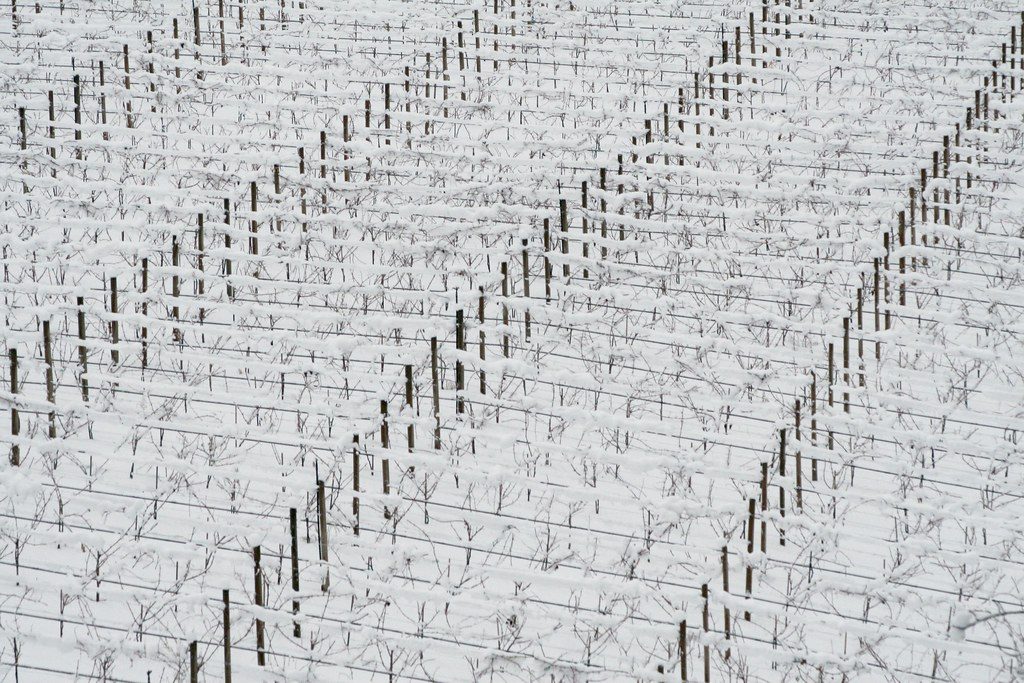While spring is in the air and we’re seeing buds breaking in northern hemisphere wine regions, winter vineyard protection is probably furthest from people’s minds at the moment. However, as with any business, it’s important to plan ahead and thus a discussion regarding cold weather vineyard practices is always appropriate.
While extreme winter chill isn’t a big problem in many wine regions, those regions in more northerly climes are certainly no stranger to this issue. For those regions needing protection against harsh winter temperatures, the most common approach is to bury the vines come winter, in hopes that the soil provides some warmth in the otherwise frigid winter air. Additionally, the use of more cold-hardy varieties is preferred, as theoretically it would take a much lower temperature to inflict significant damage to more cold-intolerant varieties.
Burying the vines for the winter can be labor and cost intensive, with additional environmental issues possible such as soil erosion due to the effects of wind on bare soil. Finding an alternative to burying vines could be beneficial from both an economic and an environmental standpoint.

“New Year’s Eve” by (Luciano) is licensed under CC BY-NC-ND 2.0
Much of the research on winter vine protection has focused on improving the freeze tolerance of the plants. Freeze tolerance is influenced by many factors, including grape variety, vine age, water availability, viticultural management practices, etc. Some strategies for improving freeze tolerance in grape vines include grafting, breeding, and chemical applications. Additionally, using physical covering of sorts has been examined, as well as different training systems for improved winter protection.
One example of a physical covering is a hydrophobic particle film, which has been shown to decrease injury due to winter freezing in potatoes, citrus plants, and grapevines. Basically, this liquid brown and cream-like film wraps around the branches/stems, which acts as a sort of jacket for the vines. In addition to protecting against winter freeze damage, this sort of film has been shown to improve plant growth, seedling survival rate, water use efficiency, and slow down evaporation. This film can also be applied to the soil, which has been shown to provide a protective effect on the soil water, while still allowing for water, nutrients, pesticides, etc., to filter through. Finally, this film is designed to degrade into a humic acid organic fertilizer within 70 to 90 days after application.
A relatively new study, published in the February 2019 issue for Scientia Horticulturae, aimed to evaluate the effectiveness of this kind of biofilm protection on grapevines, focusing on vine death, germination date, yield, berry quality, and costs.
Brief Methods
This study took place at a research vineyard at the Northwest Agriculture and Forestry University in Heyang County, China, during the winters of 2015 and 2016.
Death rate was evaluated using the following Vitis vinifera cultivars: Cabernet Sauvignon, Cabernet Franc, Merlot, Pinot Noir, Marselan, Chardonnay, Ecolly, Riesling, Sauvignon Blanc, and Italian Riesling (total 10 cultivars and 28 strains).
Bud germination date, yield, and berry quality were evaluated using two cultivars: Cabernet Sauvignon and Italian Riesling.
There were two treatments in this study: 1) vine burying, and 2) biofilm application. Interestingly, there was no mention of a control treatment.
For the vine burying treatment, vines were buried from December through March (180 vines).
For the biofilm treatment, branches and soil were covered with the film (120 vines).

“Ice on grapevines” by wickenden is licensed under CC BY-NC-SA 2.0
The following were measured and analyzed for both treatments: vine death rate (above ground and whole plant), bud germination date, yield, berry quality (reducing sugars, titratable acidity, tannin, flavanol, flavonoids, total phenols, and anthocyanins), and vineyard operation costs.
Selected Results
- 2015 was a winter with extreme cold, which resulted in some grapevine deaths in the biofilm treatment. No deaths were noted for the vine burying treatment.
- Above-ground deaths:
- Cabernet Sauvignon: 62.29%
- Cabernet Franc: 50.4%
- Merlot: 8.5%
- Pinot Noir: 47%
- Marselan: 42%
- Chardonnay: 73.25%
- Ecolly: 1.5%
- Riesling: 64.67%
- Sauvignon Blanc: 21%
- Italian Riesling: 0%
- Whole plant deaths:
- Cabernet Sauvignon: 32.29%
- Cabernet Franc: 5.6%
- Merlot: 2%
- Pinot Noir: 13%
- Marselan: 22%
- Chardonnay: 26.55%
- Ecolly: 0.5%
- Riesling: 18.33%
- Sauvignon Blanc: 3%
- Italian Riesling: 0%
- Above-ground deaths:
- Bud germination dates for the vine burying treatment was about 1 week earlier than the biofilm treatment vines in 2016, and at about the same time in 2017.
- Yields for Cabernet Sauvignon were down in 2016, due to the vine deaths in the biofilm treatment. Yields for all other varieties and years were similar between the vine burying and biofilm treatments.
- Cabernet Sauvignon:
- Average reducing sugars were 3.7% higher for buried vines compared to biofilm-treated vines.
- Average titratable acidity was 4.56% lower for buried vines compared to biofilm-treated vines.
- Average sugar-acid ratio was 7.98% higher for buried vines compared to biofilm-treated vines.
- Italian Riesling:
- Average reducing sugars were 9.01% lower for buried vines compared to biofilm-treated vines.
- Average titratable acidity was 8.42% higher for buried vines compared to biofilm-treated vines.
- Average sugar-acid ratio was 16.68% lower for buried vines compared to biofilm-treated vines.
- Tannins, flavanols, flavonoids, and total phenols were higher in grapes from biofilm-treated vines compared with buried vines for both Cabernet Sauvignon and Italian Riesling.
- Vine burying required more work than the biofilm treatment.
- Vine burying: winter unmounting, winter vine burying, branch removal, spring unburying, spring mounting, equipment, and labor costs.
- Biofilm treatment: branch removal, cost of biofilm, equipment, and labor costs.
- Total costs of the biofilm treatment were 48.04% lower than the total costs of the vine burying treatment.
Conclusions
Overall, the results of this study suggest that using biofilm to protect grapevines in the winter may be a viable alternative to vine burying to protect from winter freeze damage. Using biofilm could possibly delay bud germination by a week, which could reduce the likelihood of being hit with spring frost and increasing overall yield.
One potential issue is the effectiveness of the biofilm at extremely low temperatures. During this study, one of the winters experienced a chill that hadn’t been felt in the 6 years prior. The only plants that experience partial or whole deaths were those that had been treated with biofilm. It’s possible that while the biofilm does protect against winter freezes for the most part, it might not be enough to withstand extreme low temperatures.

“vineyard-snow” by JeremyOK is licensed under CC BY-NC 2.0
In regards to chemical composition of grapes, results were highly dependent upon grape cultivar. For Cabernet Sauvignon and Italian Riesling, sugar-acid ratios were completely opposite one another when comparing the two treatment types. This indicates that biofilm treatment may be more beneficially for some cultivars over others. Other chemical measurements were similar between the two cultivars in that phenolic composition appears to increase under biofilm treatment for both.
All of this being said, I have one HUGE problem with this study. Where are the controls? There are two treatments — vine burying and biofilm – but there doesn’t appear to be any negative control (vines not winterized in any way). Even though we already know more vines are probably going to die if they aren’t treated with any type of winterization, having a control is critical for the integrity of the experiment. Of course, you can run an experiment without a control and still come up with some interesting results and potentially useful data, however, without a proper control, you can never be completely certain if your results were due to the treatment or due to some other outside, uncontrolled factor.
So, the results of this study, while interesting, should be taken with a grain of salt. Much more work would need to be done on different cultivars, different growing regions, and also utilizing at least one control. Should these results be repeatable, using biofilm as an alternative to vine burying for protection against winter chill for some grape cultivars that yields quality grapes at a lower cost to the winery.

3 comments for “Using Biofilm As An Alternative to Vine Burying for Winter Freeze Protection in Grapevines”